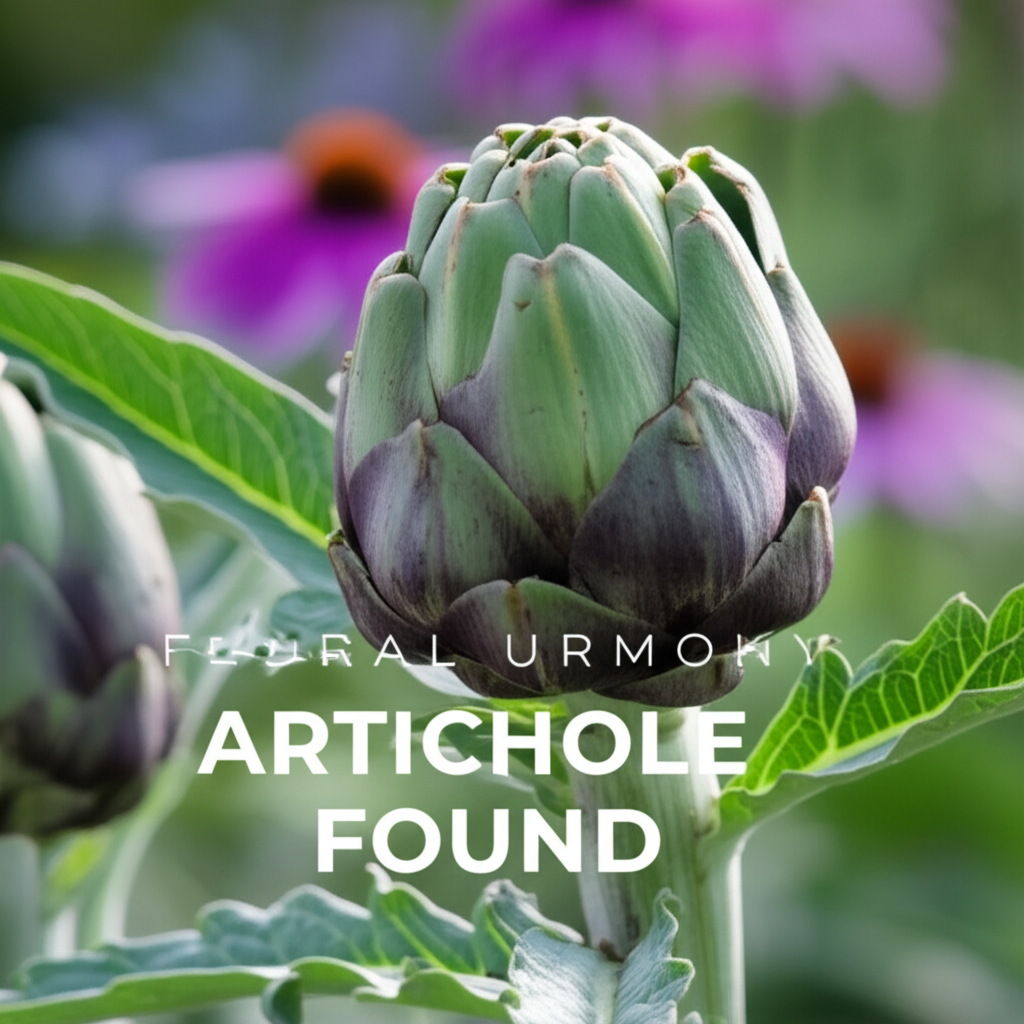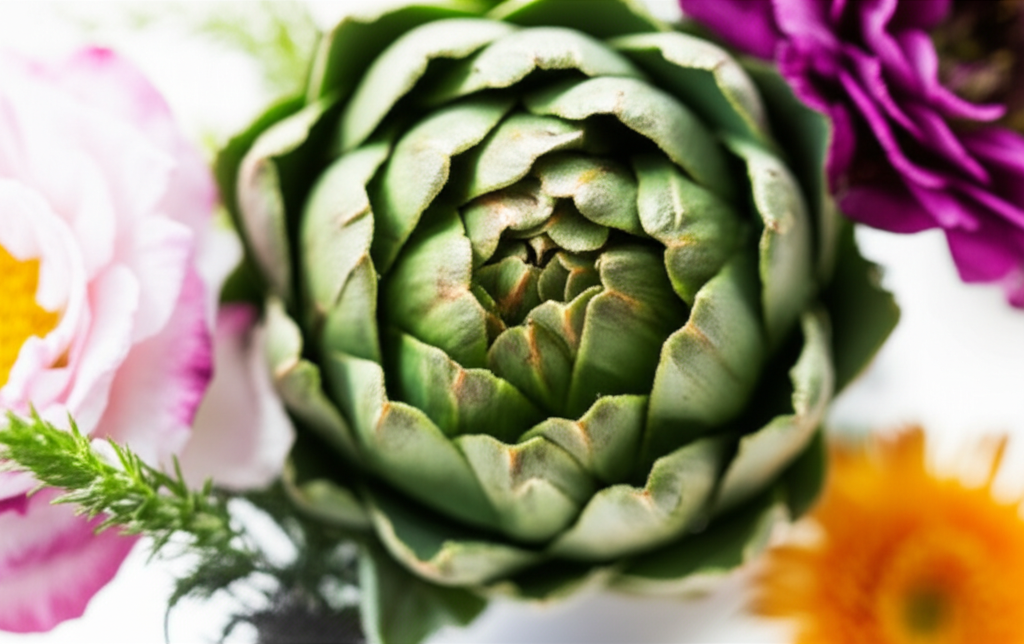The Unconventional Beauty of Globe Artichokes in Floral Design
When one thinks of floral arrangements, vibrant roses, delicate lilies, and lush greenery often come to mind. However, the world of floristry is constantly evolving, embracing the unexpected to create truly unique and captivating displays. Among these unconventional stars, the globe artichoke (Cynara cardunculus var. scolymus) stands out. Far from being solely a culinary delight, the globe artichoke boasts a remarkable architectural form and a subtle yet striking color palette that can profoundly complement a wide variety of other flowers. This article will delve into the surprising ways globe artichokes can elevate floral designs, exploring their visual impact, textural contributions, and symbolic meanings.
Understanding the Globe Artichoke as a Floral Element
Before we explore its complementary role, it’s essential to appreciate the artichoke itself as a floral specimen. The globe artichoke, when allowed to bloom, produces a magnificent flower head. This head is not a typical petal-based bloom but rather a composite structure of tightly packed, scale-like bracts, each tipped with a sharp, purplish spine. The color of these bracts can range from a muted green to a deep violet, offering a sophisticated and earthy tone. The overall shape is spherical or conical, providing a strong, sculptural element.
Key Characteristics of the Globe Artichoke for Floral Design
- Architectural Form: Its strong, geometric shape provides a solid anchor point in arrangements.
- Textural Contrast: The rough, layered texture of the bracts offers a compelling contrast to smoother blooms.
- Unique Color Palette: The greens and purples add an unusual and sophisticated hue.
- Longevity: Artichokes are known for their durability, making them excellent additions to long-lasting arrangements.
- Symbolism: Historically, artichokes have symbolized protection, hope, and prosperity.
Complementary Color Palettes and Textures

The true magic of incorporating globe artichokes into floral arrangements lies in their ability to play off the colors and textures of other blooms. Their muted, earthy tones act as a sophisticated backdrop or a grounding element for more vibrant or delicate flowers.
Pairing with Vibrant Blooms
The deep greens and purples of the artichoke bracts provide a stunning contrast to brightly colored flowers. Imagine a bouquet featuring:
- Scarlet Red Roses: The intense red of roses is amplified by the cool tones of the artichoke.
- Sunny Yellow Dahlias: The cheerful yellow pops against the darker artichoke, creating a bold statement.
- Fuchsia Peonies: The rich pink of peonies finds an elegant partner in the artichoke’s subtle hues.
These pairings are not just about color contrast; they are also about textural interplay. The velvety petals of a rose or peony against the rough, layered bracts of an artichoke create a tactile richness that engages the viewer on multiple levels.
Harmonizing with Muted and Pastel Tones
Globe artichokes are equally adept at complementing softer color palettes. Their understated elegance allows them to blend seamlessly with:
- Soft Lavender Statice: The gentle purple of statice echoes the artichoke’s subtle violet tones, creating a harmonious and ethereal look.
- Creamy White Lisianthus: The crisp white of lisianthus is subtly enhanced by the backdrop of green artichoke bracts.
- Pale Pink Snapdragons: The soft pink adds a touch of romance, while the artichoke provides a grounding, earthy presence.
In these arrangements, the artichoke acts as a sophisticated moderator, preventing pastel palettes from becoming too saccharine and adding a touch of unexpected depth.
The Role of Texture in Floral Design
Texture is a critical, yet often overlooked, element in creating visually appealing floral arrangements. The globe artichoke offers a distinctive textural contribution:
- Rough vs. Smooth: The coarse, layered texture of the artichoke’s bracts provides a stark contrast to the smooth, often waxy petals of many flowers. This contrast adds visual interest and complexity.
- Spiky Elements: The sharp tips of the bracts can introduce a subtle edginess or a touch of wildness to an arrangement, especially when paired with softer, rounded blooms.
- Architectural Form: The distinct, almost geometric shape of the artichoke provides a structural element that can balance out the more organic forms of other flowers and foliage.
Key Facts/Comparison: Artichoke Bloom vs. Traditional Blooms
| Feature | Globe Artichoke Bloom | Traditional Blooms (e.g., Roses, Lilies) |
| :————— | :————————————————- | :————————————— |
| Form | Spherical/Conical, layered bracts, spiky tips | Varied petal structures, often rounded or trumpet-shaped |
| Color | Muted greens to deep violets | Wide spectrum, often vibrant or pastel |
| Texture | Rough, layered, somewhat leathery | Smooth, velvety, delicate |
| Primary Role | Architectural anchor, textural contrast, unique color accent | Focal point, romantic, classic beauty |
| Longevity | High, can be dried effectively | Varies, some are very delicate |
| Availability | Seasonal, often foraged or specialty floral suppliers | Widely available, year-round in many cases |
Creating Impactful Arrangements with Globe Artichokes
The way a globe artichoke is incorporated into an arrangement significantly influences its overall impact. Whether used as a focal point or a supporting player, its unique characteristics can transform a simple bouquet into a work of art.
As a Focal Point
When used as a primary focal point, the globe artichoke commands attention. Its unusual form and color draw the eye, creating a sense of drama and sophistication. This approach works well in modern or minimalist designs where its sculptural qualities can be fully appreciated. Consider pairing a single, large artichoke bloom with minimal supporting elements, such as:
- Tall, slender calla lilies: The clean lines of callas complement the artichoke’s structure.
- Eucalyptus foliage: The silvery-green of eucalyptus harmonizes with the artichoke’s natural tones.
- Minimalist greenery like hosta leaves: Large, structural leaves provide a complementary backdrop without overwhelming the artichoke.
As a Supporting Element
More commonly, globe artichokes are used as a sophisticated supporting element. Here, they add depth, texture, and a unique color accent without dominating the arrangement. They can be nestled amongst:
- Fuller blooms like hydrangeas or peonies: The artichoke’s structure peeks through, adding interest.
- Spiky flowers like delphiniums or gladiolus: The similar spiky texture creates a cohesive, dynamic feel.
- Trailing elements like ivy or jasmine: The contrast between the grounded artichoke and trailing vines adds a whimsical touch.
Incorporating Different Stages of the Artichoke
Beyond the fully bloomed flower, even the immature bud of the globe artichoke can be used in floral design. These buds, with their tightly packed scales, offer a dense, textural element that can be used in mass arrangements or as part of a more rustic display. The bud’s green hue is versatile and blends well with a wide range of foliage.
Steps to Incorporate Globe Artichokes into Floral Design
Using globe artichokes in floral arrangements is straightforward, but a few key steps ensure their beauty and longevity.
Steps for Floral Design with Globe Artichokes
- Selection: Choose firm, heavy artichokes with tightly closed bracts. The color should be consistent, and the stem should be fresh.
- Preparation: Trim the stem to the desired length. Remove any tough outer leaves or thorns at the base of the artichoke if desired for easier handling and a cleaner look.
- Hydration: Place the prepared artichoke in cool water immediately after cutting. Consider cutting the stem underwater to prevent air bubbles from entering the vascular system.
- Placement: Decide whether the artichoke will be a focal point or a supporting element. For structural support, the artichoke can be placed low in the arrangement. For a more prominent display, position it where it can be easily seen.
- Integration: Gently insert the artichoke stem into floral foam or arrange it amongst other flowers and foliage. Use wire or floral tape for added stability if needed.
- Finishing: Mist the arrangement lightly with water, especially if using sensitive blooms alongside the artichoke.
Pros and Cons of Using Globe Artichokes in Arrangements
| Pros | Cons |
| :————————————– | :————————————— |
| Unique architectural and textural element | Can be prickly, requiring careful handling |
| Adds sophisticated color (greens/purples) | Seasonal availability |
| Long-lasting, durable in arrangements | May not appeal to all aesthetic preferences |
| Excellent dried floral potential | Can be heavier than traditional flowers |
| Symbolically rich | Requires specific preparation techniques |
Beyond the Bloom: Using Artichoke Foliage
While the artichoke flower is the star, the foliage of the globe artichoke plant itself is also a valuable asset in floral design. The large, silvery-green, deeply lobed leaves have a striking presence and can add a dramatic, naturalistic element to arrangements.
Artichoke Foliage as a Statement Piece
Artichoke leaves offer a bold, architectural shape that can be used to:
- Create a dramatic base: Laying several leaves around the rim of a vase can create a stunning foundation.
- Add height and structure: Tall leaves can be used to frame more delicate blooms.
- Provide textural contrast: The slightly fuzzy, silvery underside of the leaves offers a different texture than the smoother tops.
These leaves complement a variety of floral styles, from rustic farmhouse arrangements to modern, minimalist designs.
The Enduring Appeal of the Unexpected
The globe artichoke, with its unconventional beauty, invites floral designers and enthusiasts to push the boundaries of traditional aesthetics. Its ability to harmonize with both bold and subtle palettes, its unique textural contribution, and its inherent architectural strength make it a truly versatile and impactful addition to any floral creation. By understanding its characteristics and incorporating it with intention, one can unlock a new dimension of beauty and sophistication in floral art, proving that sometimes, the most ordinary ingredients can yield the most extraordinary results. The globe artichoke bloom is a testament to nature’s boundless creativity, offering a striking and memorable element that will undoubtedly leave a lasting impression.
Key Facts/Comparison: Globe Artichokes and Complementary Flowers
| Feature | Globe Artichoke | Companion Flower 1 (e.g., Lavender) | Companion Flower 2 (e.g., Yarrow) | Companion Flower 3 (e.g., Marigolds) |
|---|---|---|---|---|
| Bloom Time | Late Spring to Early Summer | Early Summer to Fall | Summer to Fall | Spring to Frost |
| Color Palette | Purple/Blue buds, silvery-green foliage | Purple, Blue, Pink, White | Yellow, White, Pink, Red | Orange, Yellow, Red |
| Height | 3-6 feet | 1-3 feet | 1-4 feet | 0.5-2 feet |
| Texture | Bold, architectural, spiky | Fine, feathery, soft | Flat-topped clusters, slightly rough | Densely petaled, ruffled |
| Attracts Beneficials | Yes (bees, butterflies) | Yes (bees, butterflies, hoverflies) | Yes (bees, butterflies, ladybugs) | Yes (beneficial insects, pollinators) |
| Pest Repellent | Some evidence against aphids | Repels some insects (e.g., mosquitoes, moths) | Attracts ladybugs, which eat aphids | Repels nematodes and some common garden pests |
Steps and Considerations for Complementary Planting
| Aspect | Globe Artichoke Planting | Complementary Planting (General) | Specific Companion Considerations |
|---|---|---|---|
| Site Selection | Full sun, well-drained soil, ample space. | Consider sun exposure, soil type, and mature size of all plants. | Ensure companions don’t shade out young artichokes; select plants with similar water needs. |
| Soil Preparation | Enrich with compost and well-rotted manure. | Amend soil based on the needs of the chosen companions. | Artichokes appreciate fertile soil; companion plants can benefit from this too or have their own specific needs. |
| Planting Strategy | Plant 3-4 feet apart. | Space plants to allow for mature growth and air circulation. | Position taller plants (artichokes) to the north or west to avoid shading smaller companions. Interplant for aesthetic and ecological benefits. |
| Watering Needs | Consistent moisture, especially during dry spells. | Match watering schedules to plant requirements. | Avoid overwatering companions that prefer drier conditions; ensure artichokes receive adequate water. |
| Pros of Complementary Planting |
|
|
|
| Cons of Complementary Planting |
|
|
|


